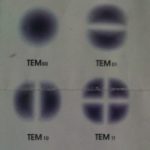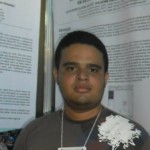- This topic has 10 replies, 5 voices, and was last updated 9 years, 1 month ago by
 Heitor Galvao.
Heitor Galvao.
-
AuthorPosts
-
-
March 12, 2015 at 4:30 pm #18592
 K. Esakki MuthuParticipant
K. Esakki MuthuParticipantHow can we do measure B-to-B BER measurement?
-
March 12, 2015 at 5:03 pm #18593
Dr Rk Sethi
ParticipantHi esakkimuthu!
Do you mean back to back or something else?
In case of optical fiber communication systems back to back measurement can be performed by simply connecting the output of the transmitter directly to the input i.e., making the length of the fiber zero. -
March 12, 2015 at 5:06 pm #18594
Dr Rk Sethi
ParticipantSorry typing mistake….
output of the transmitter directly to the input of the receiver
-
March 13, 2015 at 12:05 am #18603
 Heitor GalvaoParticipant
Heitor GalvaoParticipantI agree with you
-
-
March 12, 2015 at 7:16 pm #18595
Ravil
ParticipantHi esakkimuthu,
Agree with corrected version of Rk Sethi. You should be able to find the examples of B-to-B schemes in previous OptiSystem forums.
-
March 12, 2015 at 11:55 pm #18599
 K. Esakki MuthuParticipant
K. Esakki MuthuParticipantYes,I do agree with you both, thank you, but how these B-to-B BER will be very close to the link with fiber.
-
March 13, 2015 at 12:04 am #18602
 Heitor GalvaoParticipant
Heitor GalvaoParticipantHave good threads on the subject in the Forum search
success -
March 14, 2015 at 3:50 pm #18672
Abdallah Ismail
ParticipantRegarding Back to Back,I found some research that run Back to Back,then Plot the BER versus OSNR,and the noise is the ASE (EDFA main noise) noise,How the noise appear in this case,If we connected Tx to Rx directly according to the definition of back to back.
-
March 15, 2015 at 1:29 pm #18702
 Heitor GalvaoParticipant
Heitor GalvaoParticipantback to back transmission scheme Describes the system where the receiver and transceiver are directly connected with the transmission link.
-
-
March 15, 2015 at 7:20 am #18688
 K. Esakki MuthuParticipant
K. Esakki MuthuParticipantthank you all
-
March 15, 2015 at 9:19 am #18697
Dr Rk Sethi
ParticipantWelcome esakkimuthu!
-
-
AuthorPosts
- You must be logged in to reply to this topic.

